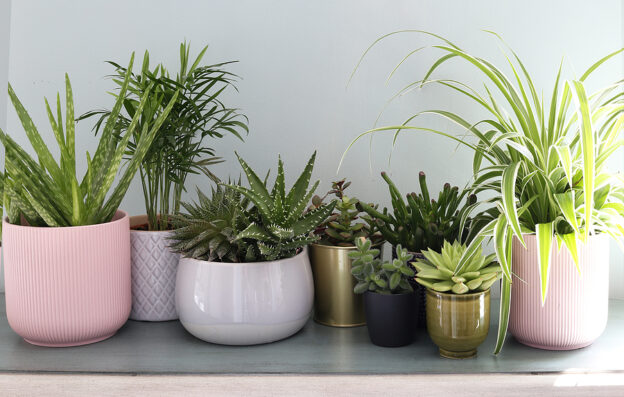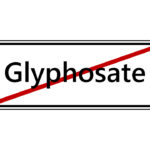By David Blyweiss, M.D., Advanced Natural Wellness
April 20, 2022
House plants are great. They look good. They put you in a great mood. And they improve air quality in the house. That’s what I want to zero in on today; how house plants can act as air purifiers in your home.
Now, you have to remember. Your house is not hermetically sealed. Whatever is in the air outside of your home makes its way indoors. So we’ve got all of these airborne pollutants circulating through our homes, whether we want them or not.
One of these is nitric dioxide, or NO2. This is a gas that gets into the air from burning of fuel. So it comes from cars, trucks, buses, boats, tractors and other fuel-burning vehicles. The average level in homes is about half of what it is outdoors.
But there are other factors that can increase NO2 levels in your home. Gas stoves are one. Kerosene heaters are another. Both gas and woodburning fireplaces contribute. So in homes that have these types of appliances, indoor levels of NO2 can actually exceed outdoor levels.
The problem with NO2 is that it aggravates the respiratory system. It worsens conditions like asthma, COPD, emphysema and bronchitis.
MD Exposes the Hidden Danger to Your Eyes

When your eyesight starts to fail, it's a real problem. Suddenly you can't go to the grocery store... you can't get to the doctor if you have an emergency... you can't meet your friends for dinner…
Your "regular" doctor doesn't have time to keep up with the latest research. And the same goes for eye doctors. They go to school to learn how to fit you for glasses and contacts, but have no way of preventing the damage and loss of eyesight that threatens your freedom and independence.
Let me show you something that explains a LOT about how your eyes work.
In my FREE Special Report, I'll show you a HUGE, untapped resource for your eyes that safely and naturally restores clear, effortless eyesight.
Click here to get started...
Even in healthy people without any respiratory issues, exposure to indoor levels of NO2 can cause inflammation of the airway and increase the chances of damage to airway epithelial cells. It also increases the risk of viral and bacterial respiratory infections.
We get enough exposure to NO2 when we’re sitting in traffic. We don’t need it in our homes. And house plants can help!
House Plants are more than a Pretty Decoration
NASA is responsible for a lot of amazing things. They put men on the moon. They gave us memory foam, UV blocking sunglasses and cochlear implants. And they taught us the indoor plants can clean the air.
Back in 1989 NASA published a paper which found indoor plants can rid the air of certain airborne pollutants, like formaldehyde and benzene. They did all kinds of experiments with a wide variety of house plants. And they found it wasn’t just the green leaves that scrubbed the air. It was the entire plant system – including the roots and potting soil.
Since then, the air-scrubbing quality of house plants has been the topic of numerous research papers. The more research that is done, the more we realize that greenery in the house has more to offer than brightening up our living rooms and making us feel good.
In fact, just the other day I was reading about how common house plants can decrease levels of NO2 indoors. This is great news for people who live in high traffic area and/or use NO2 producing appliances. Especially if there is no greenery around your house to filter the amount of pollution that seeps in.
The plants used in the study to reduce NO2 levels were the peace lily (Spathiphyllum wallisii), Corn plant (Dracaena fragrans) and fern arum (Zamioculcas zamiifolia, or “ZZ plant”).
But these aren’t the only house plants that can improve the air quality in your home.
The World's Quickest Solution for Ending Prostate and Urinary Misery
This has recently been revealed to be one of the only real breakthroughs in prostate health.
The seeds of a strange fruit (sometimes called "Chinese Apples") hold powerful phytonutrients that are a revolution in prostate health.
In fact, UCLA and Veterans Administration research have now proved this to be true.
Not only that, but it may be the worlds quickest solution for ending prostate misery.
Simply stated, these phytonutrients represent a huge step beyond beta sitosterol, saw palmetto, and other phytosterols alone.
Simply click HERE if you want to have fast prostate relief...restful, uninterrupted sleep...no more constant "urges to go"...enhanced virility...and optimal prostate support for life.
The Best Plants for Cleaner Indoor Air
Here’s the deal. You can clean the air in your house by spending $8.99 on an English ivy or corn plant. That sound like a great deal to me. It’s a lot cheaper – and much more pleasant – than treating costly respiratory issues.
According to NASA, some of the best indoor plants for cleaning the air in your house are:
| Bamboo palm | Chamaedorea seifritzii |
| Chinese evergreen | Aglaonema modestum |
| English ivy | Hedera helix |
| Ficus | Ficus benjamina |
| African Daisy | Gerbera jamesonii |
| Corn Plant | Dracaena |
| Snake Plant/ Mother-in-law’s tongue | Sansevieria laurentii |
| Peace lily | Spathiphyllum |
| Chrysanthemum | Chrysanthemum morifolium |
| Pothos/Devil’s Ivy | Epipremnum aureum |
I recommend buying plants with larger leaves for greater purification. And, of course, the more plants you have indoors, the cleaner your air will be. (If you have kids or pets in your house, just make sure to check if there are any toxicity concerns before purchasing.)
I already have plenty of plants in my house. But hey! I think I’m going to buy some more this weekend!
SOURCES:
Jarvis DJ, Adamkiewicz G, Heroux ME, et al. Nitrogen dioxide. In: WHO Guidelines for Indoor Air Quality: Selected Pollutants. Geneva: World Health Organization; 2010.
Sake H, Goudarzi G, Jalali S, Barzegar G, et al. Study of relationship between nitrogen dioxide and chronic obstructive pulmonary disease. Clinical Epidemiology and Global Health. 2020;8(2):446-449.
Chauhan AJ, Krishna MT, Frew AJ, Holgate ST. Exposure to nitrogen dioxide (NO2) and respiratory disease risk. Rev Environ Health. 1998 Jan-Jun;13(1-2):73-90.
Frampton MW, Boscia J, Roberts NJ Jr, Azadniv M, Torres A, Cox C, Morrow PE, et al. Nitrogen dioxide exposure: effects on airway and blood cells. Am J Physiol Lung Cell Mol Physiol. 2002 Jan;282(1):L155-65.
Nichols J, Chalupa D, Frasier LM, Gibb FR, Speers DM, Tsai Y, Utell MJ. Nitrogen dioxide exposure: effects on airway and blood cells. Am J Physiol Lung Cell Mol Physiol. 2002 Jan;282(1):L155-65.
Memory Foam. Nassau Innovative Partnership Program. Last Updated: June 9, 2009.
Hearing Is Believing. NASA Technology Transfer Program. Originally published in 2003.
Ultraviolet-Blocking Lenses Protect, Enhance Vision. NASA Technology Transfer Program. Originally published in 2010.
Wolverton BC, Douglas WL, Bounds K. A study of interior landscape plants for indoor air pollution abatement. NASA. 1989.
Gubb, C., Blanusa, T., Griffiths, A. et al. Potted plants can remove the pollutant nitrogen dioxide indoors. Air Qual Atmos Health. 2022;15:479–490.







